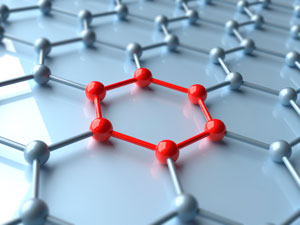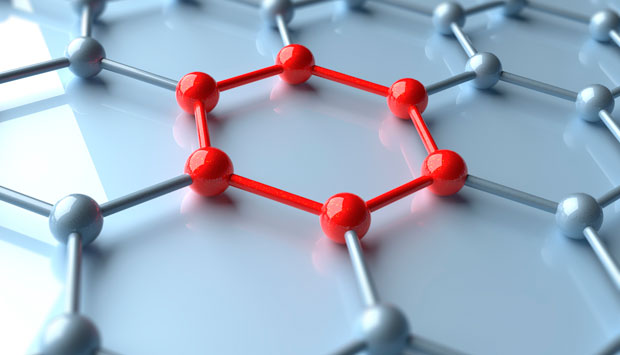
A*STAR scientists have developed a theory that explains how heat flows from graphene, which could help improve the design of nanoelectronic devices
© MARK GARLICK/SCIENCE PHOTO LIBRARY/Getty
A theoretical model that explains how heat flows from graphene could help improve the design of nanoscale devices, say A*STAR scientists.
Graphene is a two-dimensional carbon crystal just one atom thick. This strong, electrically conductive material is being investigated for a vast array of applications, including electronic devices where graphene is laid on top of a substrate such as silica. Using graphene in this way can create devices that are much more compact than conventional electronic components, but the small size comes with a cost — electrical current flowing through graphene can generate a lot of waste heat. If this heat is not dissipated into the substrate, it can affect a device’s performance and longevity.
Zhun-Yong Ong and colleagues at the A*STAR Institute of High Performance Computing have developed the first theoretical model that accurately predicts the rate of heat dissipation. Their study exploited the idea that vibrations in the crystal lattice, called phonons, carry most of this heat across the boundary, and the flexing of the graphene sheet affects how these phonons behave1.
The researchers used their theory to calculate heat dissipation from graphene, and a related two-dimensional material called molybdenum disulfide, into two types of silica substrate, at temperatures from -268 to more than 120 degrees Celsius.
On the more typical form of silica, one square meter of graphene transfers 34.6 megawatts of heat power for every degree of temperature rise (34.6 MWK-1m-2). When a second layer of silica is laid on top of the graphene sheet, it dramatically improves heat transfer to the substrate beneath, to 105 MWK-1m-2.The researchers saw a similar trend in molybdenum disulfide, and suggest that the top layer changes how the graphene lattice vibrates. This makes it easier for low-frequency vibrations to travel into the substrate, carrying heat energy with them.

Gang Zhang (left) and Zhun-Yong Ong at the A*STAR Institute of High Performance Computing.
© 2017 A*STAR Institute of High Performance Computing
“More efficient heat transfer is an advantage for the prevention of overheating in nanoelectronics,” says Ong. “On the other hand, localized heating is sometimes needed for applications such as phase change memory devices, and thus the rapid diffusion of heat may be considered undesirable.”
The theory could help to fine-tune the interactions between graphene and other materials, says Ong: “This understanding can enable us to optimize the structure and materials in designing 2D nanoscale devices, for more efficient heat dissipation.”
Ong has recently extended the theory to account for heat dissipation from more complex 2D crystals2, and is continuing to refine the model.
The A*STAR-affiliated researchers contributing to this research are from the Institute of High Performance Computing. For more information about the team’s research, please visit the Mechano-Electronics webpage.




